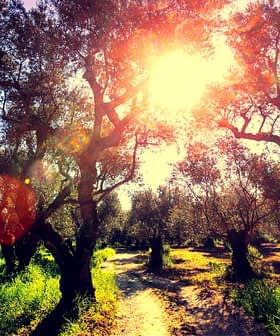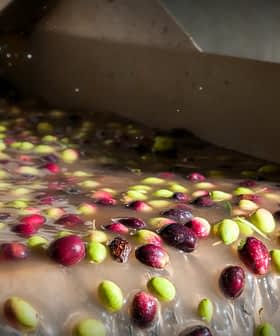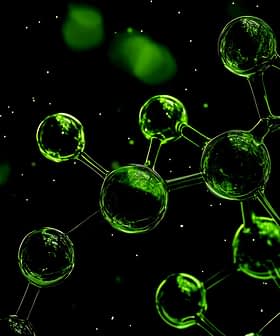Mona Lisa Smile . . . or Grimace
Dr. Vito Franco of Palermo University in Italy suggests that the enigmatic smile of the Mona Lisa may be due to a build-up of fatty acids caused by high cholesterol levels, potentially linking her longevity to a diet rich in olive oil. Portuguese scientists have identified a component of olive oil, DHPEA-EDA, that protects red blood cells from damage and could potentially be used to create oils specifically designed to combat cholesterol and reduce the risk of heart disease.
The most talked about feature of the world’s most famous painting is that enigmatic smile. But is it a smile or perhaps just a physiological quirk?
According to Dr. Vito Franco, professor of pathological anatomy at Palermo University in Italy, the area around the mouth and jaw of the Mona Lisa “shows clear signs of a build-up of fatty acids under the skin, caused by too much cholesterol.“
Heart disease is in part caused by free radicals reacting with ‘bad’ cholesterol to harden the arteries. Portuguese scientists from the University of Porto identified the component of olive oil that provides the greatest protection from heart attack and stroke. By analyzing the antioxidants in olive oil, the researchers demonstrated that one in particular, known as DHPEA-EDA, protects red blood cells from damage more than any other. The researchers believed their findings could result in the creation of oils ‘specifically designed’ to aid in combating cholesterol and reducing the risk of heart disease.
Whilst concepts like polyphenolic compounds, antioxidants and cholesterol were quite alien to the people of Florence in the 1500s, one could surmise that the Mona Lisa (otherwise known as Lisa Gherardini who ‘married up’ to become the wife of a rich Florentine silk merchant, Francesco del Giocondo, which is why the painting is also known as La Joconde in French, or La Gioconda in Italian) came to later discover the delights of extra virgin olive oil from the hills of Tuscany.
Why? Because Lisa sat for Leonardo da Vinci at the tender age of 24 and is believed to have died almost 50 years later. Given the era (not to mention her elevated cholesterol levels earlier in life …) this represents a remarkably long lifespan and whilst there are no records as to her diet, perhaps, just perhaps, such longevity was the result of the ample quantities of extra virgin olive oil found in such famous Florentine dishes as tonno e fagioliand pappardelle sulla lepre.









